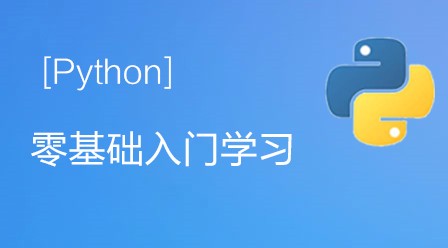高考于今日正式结束了,相信很多小伙伴们已经安排好了假期,是准备出去约上几个小伙伴出去旅游?又或者是出去打个暑假工,为父母减轻压力?再或者是在这个暑假学习一个技能,为以后的生活提前铺垫?
学习技能,说到这就有很多的技能了。各种类型的技能,但是我相信很多人会忽视一个作用特别大的技能——python编程。
这篇文章,将带你走进python的大门,带你了解python内每个字符的含义,入门python
让你在大学生活中用一项技能,获得有限择偶权。
PS:觉得有帮助的可以帮忙一键三连,给个意见。如有需要交流也可以私信我哟。
 注意:这篇教程是基于 Python 3 写的。
注意:这篇教程是基于 Python 3 写的。
#用井字符开头的是单行注释
""" 多行字符串用三个引号 包裹,也常被用来做多 行注释 """
原始数据类型和运算符
整数
3 # => 3
算术
1 + 1 # => 2 8 - 1 # => 7 10 * 2 # => 20
除法例外,会自动转换成浮点数
35 / 5 # => 7.0 5 / 3 # => 1.6666666666666667
整数除法的结果都是向下取整
5 // 3 # => 1 5.0 // 3.0 # => 1.0 # 浮点数也可以 -5 // 3 # => -2 -5.0 // 3.0 # => -2.0
浮点数的运算结果也是浮点数
3 * 2.0 # => 6.0
模除
7 % 3 # => 1
x的y次方
2**4 # => 16
用括号决定优先级
(1 + 3) * 2 # => 8
布尔值
True False
用not取非
not True # => False not False # => True
逻辑运算符,注意and和or都是小写
True and False # => False False or True # => True
整数也可以当作布尔值
0 and 2 # => 0 -5 or 0 # => -5 0 == False # => True 2 == True # => False 1 == True # => True
用==判断相等
1 == 1 # => True 2 == 1 # => False
用!=判断不等
1 != 1 # => False 2 != 1 # => True
比较大小
1 < 10 # => True 1 > 10 # => False 2 <= 2 # => True 2 >= 2 # => True
大小比较可以连起来!
1 < 2 < 3 # => True 2 < 3 < 2 # => False
字符串用单引双引都可以
"这是个字符串" '这也是个字符串'
用加号连接字符串
"Hello " + "world!" # => "Hello world!"
字符串可以被当作字符列表
"This is a string"[0] # => 'T'
用.format来格式化字符串
"{} can be {}".format("strings", "interpolated")
可以重复参数以节省时间
"{0} be nimble, {0} be quick, {0} jump over the {1}".format("Jack", "candle stick")
=> "Jack be nimble, Jack be quick, Jack jump over the candle stick"
如果不想数参数,可以用关键字
"{name} wants to eat {food}".format(name="Bob", food="lasagna")
=> "Bob wants to eat lasagna"
如果你的Python3程序也要在Python2.5以下环境运行,也可以用老式的格式化语法
"%s can be %s the %s way" % ("strings", "interpolated", "old")
None是一个对象
None # => None
当与None进行比较时不要用 ==,要用is。is是用来比较两个变量是否指向同一个对象。
"etc" is None # => False None is None # => True
None,0,空字符串,空列表,空字典都算是False
所有其他值都是True
bool(0) # => False bool("") # => False bool([]) # => False bool({}) # => False
变量和集合
print是内置的打印函数
print("I'm Python. Nice to meet you!")
在给变量赋值前不用提前声明
传统的变量命名是小写,用下划线分隔单词
some_var = 5 some_var # => 5
访问未赋值的变量会抛出异常
参考流程控制一段来学习异常处理
some_unknown_var # 抛出NameError
用列表(list)储存序列
li = []
创建列表时也可以同时赋给元素
other_li = [4, 5, 6]
用append在列表最后追加元素
li.append(1) # li现在是[1] li.append(2) # li现在是[1, 2] li.append(4) # li现在是[1, 2, 4] li.append(3) # li现在是[1, 2, 4, 3]
用pop从列表尾部删除
li.pop() # => 3 且li现在是[1, 2, 4]
把3再放回去
li.append(3) # li变回[1, 2, 4, 3]
列表存取跟数组一样
li[0] # => 1
取出最后一个元素
li[-1] # => 3
越界存取会造成IndexError
li[4] # 抛出IndexError
列表有切割语法
li[1:3] # => [2, 4]
取尾
li[2:] # => [4, 3]
取头
li[:3] # => [1, 2, 4]
隔一个取一个
li[::2] # =>[1, 4]
倒排列表
li[::-1] # => [3, 4, 2, 1]
可以用三个参数的任何组合来构建切割
li[始:终:步伐]
用del删除任何一个元素
del li[2] # li is now [1, 2, 3]
列表可以相加
注意:li和other_li的值都不变
li + other_li # => [1, 2, 3, 4, 5, 6]
用extend拼接列表
li.extend(other_li) # li现在是[1, 2, 3, 4, 5, 6]
用in测试列表是否包含值
1 in li # => True
用len取列表长度
len(li) # => 6
元组是不可改变的序列
tup = (1, 2, 3) tup[0] # => 1 tup[0] = 3 # 抛出TypeError
列表允许的操作元组大都可以
len(tup) # => 3 tup + (4, 5, 6) # => (1, 2, 3, 4, 5, 6) tup[:2] # => (1, 2) 2 in tup # => True
可以把元组合列表解包,赋值给变量
a, b, c = (1, 2, 3) # 现在a是1,b是2,c是3
元组周围的括号是可以省略的
d, e, f = 4, 5, 6
交换两个变量的值就这么简单
e, d = d, e # 现在d是5,e是4
用字典表达映射关系
empty_dict = {}
初始化的字典
filled_dict = {"one": 1, "two": 2, "three": 3}
用[]取值
filled_dict["one"] # => 1
用 keys 获得所有的键。
因为 keys 返回一个可迭代对象,所以在这里把结果包在 list 里。我们下面会详细介绍可迭代。
注意:字典键的顺序是不定的,你得到的结果可能和以下不同。
list(filled_dict.keys()) # => ["three", "two", "one"]
用values获得所有的值。跟keys一样,要用list包起来,顺序也可能不同。
list(filled_dict.values()) # => [3, 2, 1]
用in测试一个字典是否包含一个键
"one" in filled_dict # => True 1 in filled_dict # => False
访问不存在的键会导致KeyError
filled_dict["four"] # KeyError
用get来避免KeyError
filled_dict.get("one") # => 1 filled_dict.get("four") # => None
当键不存在的时候get方法可以返回默认值
filled_dict.get("one", 4) # => 1 filled_dict.get("four", 4) # => 4
setdefault方法只有当键不存在的时候插入新值
filled_dict.setdefault("five", 5) # filled_dict["five"]设为5 filled_dict.setdefault("five", 6) # filled_dict["five"]还是5
字典赋值
filled_dict.update({"four":4}) # => {"one": 1, "two": 2, "three": 3, "four": 4} filled_dict["four"] = 4 # 另一种赋值方法
用del删除
del filled_dict["one"] # 从filled_dict中把one删除
用set表达集合
empty_set = set()
初始化一个集合,语法跟字典相似。
some_set = {1, 1, 2, 2, 3, 4} # some_set现在是{1, 2, 3, 4}
可以把集合赋值于变量
filled_set = some_set
为集合添加元素
filled_set.add(5) # filled_set现在是{1, 2, 3, 4, 5}
& 取交集
other_set = {3, 4, 5, 6} filled_set & other_set # => {3, 4, 5}
| 取并集
filled_set | other_set # => {1, 2, 3, 4, 5, 6}
- 取补集
{1, 2, 3, 4} - {2, 3, 5} # => {1, 4}
in 测试集合是否包含元素
2 in filled_set # => True 10 in filled_set # => False
流程控制和迭代器
先随便定义一个变量
some_var = 5
这是个if语句。注意缩进在Python里是有意义的
印出"some_var比10小"
if some_var > 10: print("some_var比10大") elif some_var < 10: # elif句是可选的 print("some_var比10小") else: # else也是可选的 print("some_var就是10")
""" 用for循环语句遍历列表 打印: dog is a mammal cat is a mammal mouse is a mammal """ for animal in ["dog", "cat", "mouse"]: print("{} is a mammal".format(animal))
""" "range(number)"返回数字列表从0到给的数字 打印: 0 1 2 3 """ for i in range(4): print(i)
""" while循环直到条件不满足 打印: 0 1 2 3 """ x = 0 while x < 4: print(x) x += 1 # x = x + 1 的简写
用try/except块处理异常状况
try: # 用raise抛出异常 raise IndexError("This is an index error") except IndexError as e: pass # pass是无操作,但是应该在这里处理错误 except (TypeError, NameError): pass # 可以同时处理不同类的错误 else: # else语句是可选的,必须在所有的except之后 print("All good!") # 只有当try运行完没有错误的时候这句才会运行
#Python提供一个叫做可迭代(iterable)的基本抽象。一个可迭代对象是可以被当作序列
的对象。比如说上面range返回的对象就是可迭代的。
filled_dict = {"one": 1, "two": 2, "three": 3} our_iterable = filled_dict.keys() print(our_iterable) # => dict_keys(['one', 'two', 'three']),是一个实现可迭代接口的对象
可迭代对象可以遍历
for i in our_iterable: print(i) # 打印 one, two, three
但是不可以随机访问
our_iterable[1] # 抛出TypeError
可迭代对象知道怎么生成迭代器
our_iterator = iter(our_iterable)
迭代器是一个可以记住遍历的位置的对象
用next可以取得下一个元素
our_iterator.next() # => "one"
再一次调取next时会记得位置
our_iterator.next() # => "two" our_iterator.next() # => "three"
当迭代器所有元素都取出后,会抛出StopIteration
our_iterator.next() # 抛出StopIteration
可以用list一次取出迭代器所有的元素
list(filled_dict.keys()) # => Returns ["one", "two", "three"]
函数
用def定义新函数
def add(x, y): print("x is {} and y is {}".format(x, y)) return x + y # 用return语句返回
调用函数
add(5, 6) # => 印出"x is 5 and y is 6"并且返回11
也可以用关键字参数来调用函数
add(y=6, x=5) # 关键字参数可以用任何顺序
我们可以定义一个可变参数函数
def varargs(*args): return args
varargs(1, 2, 3) # => (1, 2, 3)
我们也可以定义一个关键字可变参数函数
def keyword_args(**kwargs): return kwargs
我们来看看结果是什么:
keyword_args(big="foot", loch="ness") # => {"big": "foot", "loch": "ness"}
这两种可变参数可以混着用
def all_the_args(args, *kwargs): print(args) print(kwargs) """ all_the_args(1, 2, a=3, b=4) prints: (1, 2) {"a": 3, "b": 4} """
调用可变参数函数时可以做跟上面相反的,用展开序列,用*展开字典。
args = (1, 2, 3, 4) kwargs = {"a": 3, "b": 4} all_the_args(args) # 相当于 foo(1, 2, 3, 4) all_the_args(*kwargs) # 相当于 foo(a=3, b=4) all_the_args(args, *kwargs) # 相当于 foo(1, 2, 3, 4, a=3, b=4)
函数作用域
x = 5
def setX(num): # 局部作用域的x和全局域的x是不同的 x = num # => 43 print (x) # => 43
def setGlobalX(num): global x print (x) # => 5 x = num # 现在全局域的x被赋值 print (x) # => 6
setX(43) setGlobalX(6)
函数在Python是一等公民
def create_adder(x): def adder(y): return x + y return adder
add_10 = create_adder(10) add_10(3) # => 13
也有匿名函数
(lambda x: x > 2)(3) # => True
内置的高阶函数
map(add_10, [1, 2, 3]) # => [11, 12, 13] filter(lambda x: x > 5, [3, 4, 5, 6, 7]) # => [6, 7]
用列表推导式可以简化映射和过滤。列表推导式的返回值是另一个列表。
[add_10(i) for i in [1, 2, 3]] # => [11, 12, 13] [x for x in [3, 4, 5, 6, 7] if x > 5] # => [6, 7]
类
定义一个继承object的类
class Human(object):
# 类属性,被所有此类的实例共用。
species = "H. sapiens"
# 构造方法,当实例被初始化时被调用。注意名字前后的双下划线,这是表明这个属
# 性或方法对Python有特殊意义,但是允许用户自行定义。你自己取名时不应该用这
# 种格式。
def __init__(self, name):
# Assign the argument to the instance's name attribute
self.name = name
# 实例方法,第一个参数总是self,就是这个实例对象
def say(self, msg):
return "{name}: {message}".format(name=self.name, message=msg)
# 类方法,被所有此类的实例共用。第一个参数是这个类对象。
@classmethod
def get_species(cls):
return cls.species
# 静态方法。调用时没有实例或类的绑定。
@staticmethod
def grunt():
return "*grunt*"构造一个实例
i = Human(name="Ian") print(i.say("hi")) # 印出 "Ian: hi"
j = Human("Joel") print(j.say("hello")) # 印出 "Joel: hello"
调用一个类方法
i.get_species() # => "H. sapiens"
改一个共用的类属性
Human.species = "H. neanderthalensis" i.get_species() # => "H. neanderthalensis" j.get_species() # => "H. neanderthalensis"
调用静态方法
Human.grunt() # => "grunt"
模块
用import导入模块
import math print(math.sqrt(16)) # => 4.0
也可以从模块中导入个别值
from math import ceil, floor print(ceil(3.7)) # => 4.0 print(floor(3.7)) # => 3.0
可以导入一个模块中所有值
警告:不建议这么做
from math import *
如此缩写模块名字
import math as m math.sqrt(16) == m.sqrt(16) # => True
#python模块其实就是普通的python文件。你可以自己写,然后导入。
模块的名字就是文件的名字。
你可以这样列出一个模块里所有的值
import math dir(math)
高级用法
用生成器(generators)方便地写惰性运算
def double_numbers(iterable): for i in iterable: yield i + i
生成器只有在需要时才计算下一个值。它们每一次循环只生成一个值,而不是把所有的
值全部算好。
# #range的返回值也是一个生成器,不然一个1到9000000000的列表会花很多时间和内存
#
如果你想用一个Python的关键字当作变量名,可以加一个下划线来区分。
range_ = range(1, 900000000)
当找到一个 >=30 的结果就会停
这意味着 double_nnumbers 不会生成大于30的数。
for i in double_numbers(range_): print(i) if i >= 30: break
装饰器(decorators)
这个例子中,beg装饰say
#beg会先调用say。如果返回的say_please为真,beg会改变返回的字符串。
from functools import wraps
def beg(target_function): @wraps(target_function) def wrapper(args, *kwargs): msg, say_please = target_function(args, *kwargs) if say_please: return "{} {}".format(msg, "Please! I am poor :(") return msg
return wrapper@beg def say(say_please=False): msg = "Can you buy me a beer?" return msg, say_please
print(say()) # Can you buy me a beer? print(say(say_please=True)) # Can you buy me a beer? Please! I am poor :(













